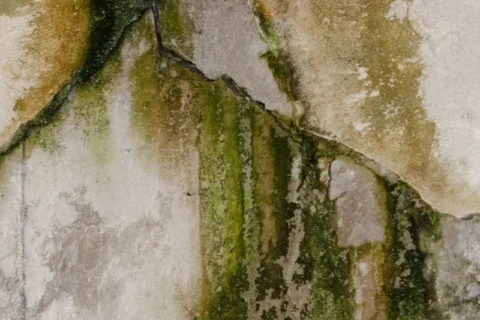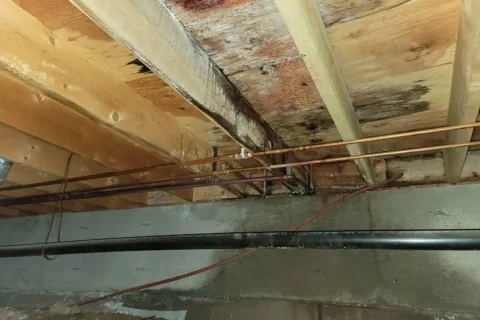Six Simple Fixes to a Wet Basement
According to the American Society of Home Inspectors, 60% of homes are plagued by a wet basement. Wet basements can cause mold, mildew, and dry rot, attract termites and other pests, and cause more serious structural problems. Any of these problems could require costly repairs if they are ignored.
Here are a few simple fixes—some you can even do yourself—that won’t cost a bundle.
1. Maintaining Outside Drainage: If you have water in your basement, find the source. The best place to start looking for the cause of the water problem is outside. Usually, it is a problem with the outside drainage system. Either it is a bent, clogged, or missing gutter; an overloaded downspout; or a clogged or broken underground collection pipe. Make sure all collected water drains away from the house and any discharge pipes extend at least three feet from the foundation.
2. Add a Window Well Cover: One common place where water gets into the basement is through the basement windows. Rain water seeps down into the window well and finds a crack or a seam to get inside the basement. While you can seal the window seams, another easy fix is to add a window well cover. There are plastic window well covers available that will let sunshine in but keep water out.
3. Fill the Cracks: If you have a poured concrete foundation and have no more than 1 or 2 cracks, proper sealing of these cracks maybe a solution for you. Any crack in the foundation wall will be a path of least resistance for any ground water to enter the basement. One of the most common mistakes people make when fixing concrete cracks is not completely filling the crack. Surface caulking that just covers the first few inches of the crack will not fix the crack. To fully fix a crack and prevent it from leaking, you need to inject the crack with either epoxy or polyurethane material. There are do-it-yourself crack injection kits available but you can also hire a professional. Cracks also could signify a structural problem. If that is that case, you are going to need more than crack injection services. It is best to get an inspection of the scope of work.
4. Sealing Walls: Sometimes the basement wall can seep water. Basement sealers are products that you or a contractor can brush directly onto the foundation walls of your basement to protect it against water seepage. You should know, however, that basement sealers are not a permanent solution; this is more of a bandage-type fix. In some rare cases, sealing the walls has trapped moisture and lead to mold growth. Many homeowners who apply basement sealers need to keep up with constant maintenance to prevent water leakage and seepage from reoccurring. And, obviously, this type of fix requires exposed foundation walls, so if your basement is finished with gypsum board walls this approach is not an option.
5. Add a Sump Pump: In case your home does not have a sump pump, it is important to address the water table that pushes up against your basement floor. A sump pump is designed to capture the water before it enters your basement and discharge the water outside away from your home.
6. Dry the Air: Even if you don’t have standing water in your basement, high humidity can also lead to problems. Condensation happens when the air inside the basement is warmer than the cold slab and concrete walls. A dehumidifier will help control the humidity level in the air. However a dehumidifier is not a cure all. Make sure all the water leaks are fixed and no water is moving into the basement before you install a dehumidifier. If you don’t fix the leaks, it will overwork the dehumidifier and cost a bundle in energy. Remember, the ideal relative humidity level is 50%.
While a confident do-it-yourselfer can tackle several of these waterproofing techniques, remedial waterproofing contractors and structural repair contractors are trained to install exterior or interior basement drainage systems. The professionals will be able to assess your situation and determine the best solutions. No matter what don’t ignore the problem. Ignoring a water problem in your basement will only turn what could have been an easy fix into a problem that will make your home environment unsafe and will cost thousands of dollars to fix in the end. Make sure that the firm you choose provides a warranty that your basement will remain dry for the life of the building. You’ll never be afraid to head downstairs again.
Ready to Get Started?
Contact Us Today to Schedule a No Pressure, No Obligation, Free Quote!


